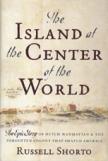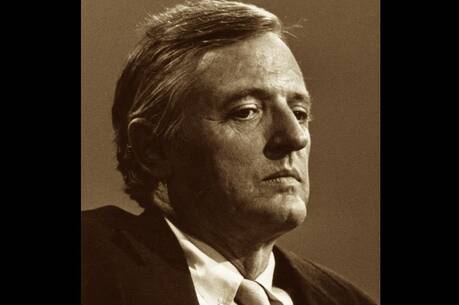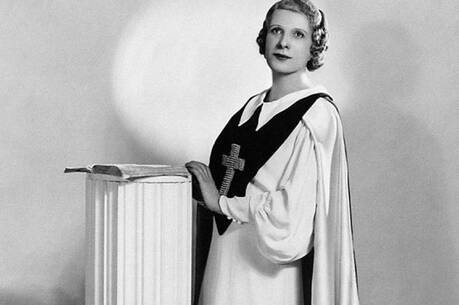From Dutch to Diverse
Russell Shorto fires a powerful salvo in the war of words over America’s origins. Forcefully contesting the ingrained notion that English settlements set the mold for American values, he mounts a convincing case for an alternative scenario, in which the Dutch-sponsored colony of New Netherland, and particularly its capital of New Amsterdam, played a decisive role in anticipating the social patterns and ways of thinking that have since come to define this country. In Shorto’s words, Manhattan is where America began.
To substantiate his claim, Shorto, an accomplished journalist with two previous books to his credit, has crafted an entertaining and enlightening work that brings into focus the long submerged and perennially distorted history of the colonial Dutch. Admittedly building on the findings and insights of a generation of scholars that has meticulously documented the Dutch imprint on the Mid-Atlantic region, Shorto aims to extract a meaning from this distant past for the present. Dutch Manhattan, in his eyes, was the true progenitor of the global city that is the heart of America today, the city where people of remarkably diverse backgrounds peaceably coexist. By telling its story, Shorto hopes to lay bare the genius of America.
Shorto’s book operates on three levels. First and foremost, it offers a sweeping narrative of Dutch colonization in North America from Henry Hudson’s voyage of exploration in 1609 (Hudson was an Englishman who worked for the Dutch) to the surrender of New Netherland to the English in 1664. The nuanced rendering of the interaction of European settlers and Native Americans over the decades is particularly welcome, since it demonstrates how seamlessly Indians were woven into the fabric of the city’s history. Shorto’s scope, though, is anything but provincial, as he deftly shows how the fortunes of New Netherlanders were linked to developments around the Atlantic and beyond. He makes clear how the intensifying rivalry between the Dutch Republic and England over the lucrative international trade reverberated across the ocean, not only in New Netherland but also in the neighboring Puritan colonies of New England.
The transatlantic reach of the narrative is matched by its vivid close-ups of people and places. Readers are transported to the world of the 17th century, as Shorto, with an eye for telling detail, evokes the sights, sounds and smells of Amsterdam, Leiden, the Hague and London, as well as the streets of New Amsterdam, and probes the personalities of enigmatic historical figures, ranging from Henry Hudson, Oliver Cromwell, Charles II, the Duke of York (later James II), George Downing, and Willem II, Prince of Orange, to Peter Minuit and Peter Stuyvesant.
Readers also find themselves absorbed in what can only be described as a plot, revolving around two strong men with conflicting visions of the future of Dutch North America. Director-General Peter Stuyvesant, a minister’s son and seasoned military man, representing the powers that be, exhibits unswerving loyalty to his employer, the Dutch West India Company. Conceiving of the world in terms of dogma and duty, Stuyvesant stands in marked contrast to his opponent, Adriaen van der Donck, a young lawyer of good family, newly embarked on an as yet undefined career in the wilderness. Cast by Shorto as the epitome of the modernforward-looking, inclined to tolerance and committed to the virtues of free tradeVan der Donck vaults to prominence as the ideologue and political leader of the colonists, as they clamor for a voice in government following the debacle of an Indian war started by Stuyvesant’s predecessor.
The story unfolds on both sides of the Atlantic and intersects with the drama of the Anglo-Dutch struggle for empire. Its recurrent theme is that the New Amsterdam model of an open society rooted in free trade, unfettered opportunity and a live-and-let-live mentality set the course on which the nation would eventually embark.
The Island at the Center of the World is more than a grand narrative. It intentionally goes behind the scenes to comment on the raw material of history, in this case the 17th-century Dutch colony’s records. Hereby hangs a fascinating and cautionary tale, of the incredible survival of these records over the centuries through fire, flood and war, and of repeated unsuccessful attempts to procure accurate English translations until the 1970’s, when a linguistics scholar named Charles Gehring commenced the herculean (and still continuing) labor of translating these documents. The neglect of the Dutch colonial roots of American history, Shorto stresses, is in no small measure attributable to the recurring failures to make this massive corpus of Dutch records available in English. Once Gehring’s translations started appearing, a major hurdle to giving the Dutch credit for their accomplishments was removed. The stage was set for a fresh look at the nation’s origins.
This brings us to the third and most profound level of Shorto’s book. In essence, it is a meditation on historical memory. The author’s eagerness to puncture the protective gauze of Anglophilia that has encircled most accounts of America’s history, popular and professional, is justifiable. Having assembled a mountain of evidence documenting the crucial role of the Dutch in the power struggles that shaped the 17th-century Atlantic, Shorto has every right to urge that New Amsterdam be moved to center stage in future versions of America’s beginnings. But in his zeal to elevate the tolerant Dutch to a place of honor in our national historical memory, he has smoothed over too many of New Amsterdam’s rough edges and overlooked the alien character of the distant past.
Africans were enslaved in New Amsterdam, and the Dutch were the premier players in the transatlantic slave trade. Despite the practice of religious toleration in Amsterdam, Peter Stuyvesant, strict Calvinist that he was, did persecute the Lutherans and the Jews, and even ordered a Quaker missionary to be whipped publicly in New Amsterdam, a fault for which Shorto roundly condemns the New England Puritans. But this, after all, was the 17th century, when the notion of human equality was in its infancy. Shorto need not shy away from Dutch shortcomings. Yet his determination to show how the seeds of tolerance have flowered in 21st-century New York causes him not only to make too much of the precedents etched in New Amsterdam, but to misconstrue their significance. Surely, the small Dutch city’s diversity is of note, especially when compared to its counterparts in the colonial world, but to conflate diversity and modern-day pluralism is to make an unwarranted conceptual leap. Telescoping history in this way does not serve Shorto well, and detracts from an otherwise edifying survey of New Amsterdam and its place in the world of the 17th century.
This article also appeared in print, under the headline “From Dutch to Diverse,” in the July 5, 2004, issue.








